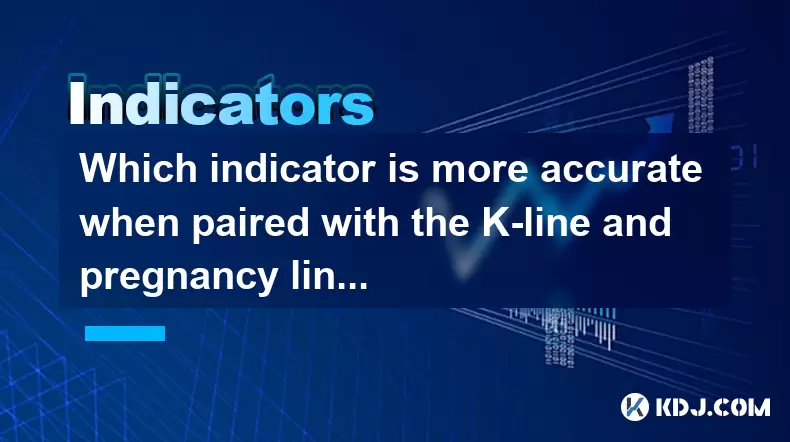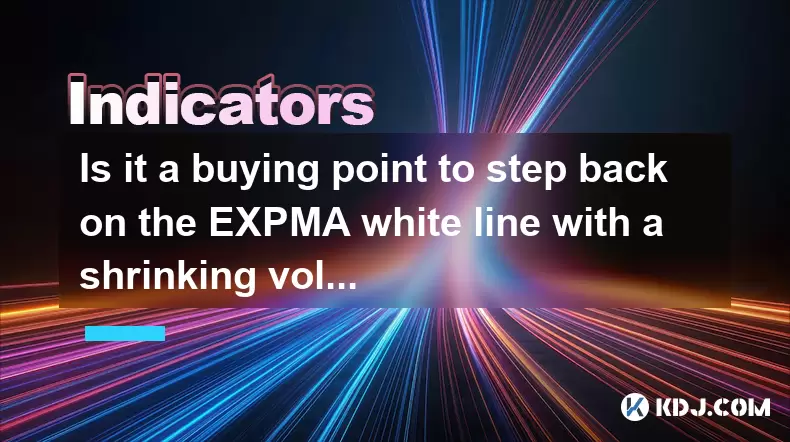-
 Bitcoin
Bitcoin $119300
1.07% -
 Ethereum
Ethereum $3730
3.87% -
 XRP
XRP $3.235
0.29% -
 Tether USDt
Tether USDt $1.000
0.00% -
 BNB
BNB $783.5
1.88% -
 Solana
Solana $188.7
0.25% -
 USDC
USDC $0.0000
-0.01% -
 Dogecoin
Dogecoin $0.2399
-0.44% -
 TRON
TRON $0.3157
2.37% -
 Cardano
Cardano $0.8254
1.94% -
 Hyperliquid
Hyperliquid $42.83
0.14% -
 Stellar
Stellar $0.4372
3.21% -
 Sui
Sui $3.859
4.91% -
 Chainlink
Chainlink $18.53
3.53% -
 Hedera
Hedera $0.2464
0.01% -
 Bitcoin Cash
Bitcoin Cash $519.8
2.46% -
 Avalanche
Avalanche $24.24
2.17% -
 Litecoin
Litecoin $113.7
0.73% -
 UNUS SED LEO
UNUS SED LEO $8.990
0.30% -
 Shiba Inu
Shiba Inu $0.00001390
0.21% -
 Toncoin
Toncoin $3.188
1.49% -
 Ethena USDe
Ethena USDe $1.001
0.02% -
 Polkadot
Polkadot $4.090
-0.91% -
 Uniswap
Uniswap $10.40
4.08% -
 Monero
Monero $326.6
3.12% -
 Bitget Token
Bitget Token $4.627
-0.42% -
 Pepe
Pepe $0.00001281
0.76% -
 Dai
Dai $1.000
0.01% -
 Aave
Aave $291.6
0.98% -
 Cronos
Cronos $0.1269
7.26%
What should I do if the long lower shadow line at a low level bottoms out and then fluctuates sideways?
A long lower shadow line in crypto charts suggests potential bullish reversal, but confirmation with volume and indicators is crucial before trading.
Jun 29, 2025 at 01:42 am

Understanding the Long Lower Shadow Line in Cryptocurrency Charts
A long lower shadow line is a candlestick pattern that indicates significant selling pressure followed by buying interest. In cryptocurrency trading, this pattern often appears at critical support levels and suggests that prices may reverse from a downtrend. When this occurs at a low level, it typically signals that sellers tried to push the price down but were met with strong demand.
The presence of a long lower shadow line at a bottoming level implies that bulls are starting to take control after a prolonged decline. This could be due to market sentiment shifting or large buyers entering the market. However, when this pattern is followed by sideways fluctuation, it creates uncertainty for traders trying to determine whether the asset has truly bottomed out or is just consolidating before another drop.
Important: A long lower shadow line alone should not be used as a standalone signal. It must be analyzed alongside other technical indicators and volume data to confirm potential reversals.
Interpreting Sideways Movement After a Bottoming Pattern
After a long lower shadow line appears at a low level, if the price begins to move sideways, it usually means that neither buyers nor sellers have taken full control of the market. This consolidation phase can last for hours or even days depending on the time frame being analyzed and the overall market conditions.
During this period, traders should look for signs of accumulation or distribution. Volume plays a crucial role here — increasing volume during upward movements within the sideways range may suggest that institutional or smart money is entering the market. Conversely, higher volume during downward tests might indicate that selling pressure is still present.
- Monitor volume patterns during consolidation to gauge buyer and seller strength.
- Identify key support and resistance levels within the sideways movement to anticipate breakout directions.
- Use moving averages such as the 20-period and 50-period EMA to assess trend strength.
Important: The sideways movement following a long lower shadow line is essentially a test of the newly formed support level. Traders should remain cautious and avoid making aggressive entries until a clear direction emerges.
How to Trade the Consolidation Phase Following a Long Lower Shadow
Once a long lower shadow candle forms and is followed by horizontal price action, traders can consider several strategies based on their risk tolerance and trading style.
One conservative approach is to wait for a confirmed breakout above the upper boundary of the consolidation zone. A breakout accompanied by increased volume often confirms that buyers are gaining control. On the flip side, a breakdown below the consolidation range may suggest that the initial bounce was merely a trap for bullish traders.
For those who prefer more aggressive entry points, placing limit orders near the lower end of the consolidation range can offer favorable risk-reward ratios, especially if other technical indicators like RSI or MACD show signs of bullish divergence.
- Set stop-loss orders below the lowest point of the long lower shadow to protect against false breakouts.
- Use Fibonacci retracement levels to identify potential reversal zones within the consolidation area.
- Combine candlestick patterns like engulfing candles or hammer formations with the sideways movement to improve timing accuracy.
Important: Trading during consolidation requires patience and discipline. Avoid overtrading and ensure that each trade setup aligns with your overall strategy and risk management plan.
Technical Indicators That Help Confirm the Validity of the Pattern
To increase the reliability of the long lower shadow followed by sideways movement, traders should incorporate multiple technical indicators into their analysis. These tools help filter out noise and provide clearer signals about potential reversals or continuations.
One effective tool is the Relative Strength Index (RSI). If RSI remains above 30 during the consolidation phase and starts to rise, it may indicate strengthening momentum. Another useful indicator is the MACD, which can reveal bullish divergences when the price makes lower lows but the MACD makes higher highs.
Additionally, the Volume Weighted Average Price (VWAP) can act as a dynamic support or resistance level during consolidation. If the price consistently holds above VWAP, it could suggest that the bulls are in control despite the sideways movement.
- Analyze RSI for oversold conditions and divergence signals during consolidation.
- Observe MACD histogram contraction and signal line crossovers for confirmation.
- Track VWAP behavior to understand institutional participation levels.
Important: No single indicator should be used in isolation. Combining multiple tools increases the probability of accurate trade setups and reduces the likelihood of false signals.
Risk Management Strategies During Uncertain Market Phases
Trading during periods of uncertainty — such as after a long lower shadow followed by sideways movement — requires strict adherence to risk management principles. Emotional trading or deviating from a well-defined plan can lead to significant losses, especially in volatile markets like cryptocurrency.
One effective method is position sizing. Instead of committing all capital at once, traders can divide their positions into smaller tranches. For example, they might enter half of the intended position upon initial confirmation and add the rest after a breakout or retest of support.
Trailing stops can also be employed to lock in profits while allowing room for the trade to develop. Additionally, setting maximum loss thresholds per trade ensures that no single trade can severely impact the overall portfolio.
- Limit risk per trade to 1-2% of total capital to maintain long-term sustainability.
- Utilize partial profit-taking to reduce exposure as the trade moves in favor.
- Review and adjust stop-loss levels based on evolving market structure.
Important: Risk management is not optional — it is a mandatory component of successful trading, particularly in uncertain phases where volatility can spike unexpectedly.
Frequently Asked Questions
Q: Can I use the long lower shadow line as a buy signal in crypto futures trading?
Yes, the long lower shadow line can serve as a potential buy signal in futures trading, but only when combined with other confirming factors such as volume spikes, bullish candlestick patterns, or positive divergence in oscillators.
Q: How long should I wait for a breakout after a long lower shadow line appears?
There is no fixed time frame, but most traders observe the price action for up to 48–72 hours on the 4-hour chart or 3–5 candlesticks on the 1-hour chart. Prolonged indecision without a breakout may invalidate the pattern.
Q: Should I place a buy order immediately after seeing a long lower shadow line?
No, immediate execution is not recommended. Wait for additional confirmation such as a close above the candle’s high or a bullish follow-through candle before entering a trade.
Q: Does the long lower shadow line work better on certain cryptocurrencies?
It works across major cryptocurrencies like BTC, ETH, and altcoins with sufficient liquidity. However, it may produce more reliable signals on larger-cap assets with consistent volume and reduced manipulation risks.
Disclaimer:info@kdj.com
The information provided is not trading advice. kdj.com does not assume any responsibility for any investments made based on the information provided in this article. Cryptocurrencies are highly volatile and it is highly recommended that you invest with caution after thorough research!
If you believe that the content used on this website infringes your copyright, please contact us immediately (info@kdj.com) and we will delete it promptly.
- TRON, Crypto Payroll, and Stablecoins: A New York Minute on the Future of Finance
- 2025-07-25 08:30:11
- WazirX, Revote, and Crypto Unlock: A New York Minute on the Latest Developments
- 2025-07-25 06:50:11
- Hong Kong Stablecoin Regulation: Navigating the Hype and Hurdles
- 2025-07-25 08:30:11
- Bitcoin LTHs, CDD Ratio, and Distribution: What's the Deal?
- 2025-07-25 08:50:12
- Satoshi-Era Bitcoin Whale Awakens: $469 Million in BTC on the Move
- 2025-07-25 06:30:11
- TIA Tokens, Crypto Shift & Ripple Effect: What's the Deal?
- 2025-07-25 07:10:11
Related knowledge

Should I go all in when DIF crosses DEA?
Jul 25,2025 at 12:42am
Understanding DIF and DEA in MACD AnalysisWhen traders analyze DIF and DEA in the context of the Moving Average Convergence Divergence (MACD) indicato...

Should I go all in when the upper edge of the box is broken?
Jul 25,2025 at 01:50am
Understanding the 'Box' in Cryptocurrency Price ChartsThe term 'box' in cryptocurrency trading typically refers to a price consolidation range where t...

Should I go all in when the parabolic turning signal appears?
Jul 25,2025 at 06:36am
Understanding the Parabolic Turning Signal in Crypto TradingThe parabolic turning signal is a technical indicator derived from the Parabolic SAR (Stop...

Should I follow up with a full position when the trading volume suddenly increases?
Jul 25,2025 at 12:28am
Understanding Sudden Increases in Trading VolumeA sudden spike in trading volume often signals heightened market activity and can indicate that new in...

Which indicator is more accurate when paired with the K-line and pregnancy line combination?
Jul 25,2025 at 05:43am
Understanding the K-Line and Pregnancy Line CombinationThe K-line, also known as the Japanese candlestick chart, is a foundational tool in technical a...

Is it a buying point to step back on the EXPMA white line with a shrinking volume?
Jul 25,2025 at 08:56am
Understanding the EXPMA Indicator and Its White LineThe Exponential Moving Average (EXPMA) is a technical analysis tool widely used in cryptocurrency ...

Should I go all in when DIF crosses DEA?
Jul 25,2025 at 12:42am
Understanding DIF and DEA in MACD AnalysisWhen traders analyze DIF and DEA in the context of the Moving Average Convergence Divergence (MACD) indicato...

Should I go all in when the upper edge of the box is broken?
Jul 25,2025 at 01:50am
Understanding the 'Box' in Cryptocurrency Price ChartsThe term 'box' in cryptocurrency trading typically refers to a price consolidation range where t...

Should I go all in when the parabolic turning signal appears?
Jul 25,2025 at 06:36am
Understanding the Parabolic Turning Signal in Crypto TradingThe parabolic turning signal is a technical indicator derived from the Parabolic SAR (Stop...

Should I follow up with a full position when the trading volume suddenly increases?
Jul 25,2025 at 12:28am
Understanding Sudden Increases in Trading VolumeA sudden spike in trading volume often signals heightened market activity and can indicate that new in...

Which indicator is more accurate when paired with the K-line and pregnancy line combination?
Jul 25,2025 at 05:43am
Understanding the K-Line and Pregnancy Line CombinationThe K-line, also known as the Japanese candlestick chart, is a foundational tool in technical a...

Is it a buying point to step back on the EXPMA white line with a shrinking volume?
Jul 25,2025 at 08:56am
Understanding the EXPMA Indicator and Its White LineThe Exponential Moving Average (EXPMA) is a technical analysis tool widely used in cryptocurrency ...
See all articles

























































































